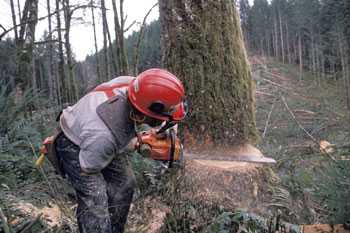Musculoskeletal Health Program

Burden, Need and Impact
NIOSH strives to maximize its impact to protect the workforce. The NIOSH Musculoskeletal Health Cross-Sector Program identifies priorities to guide investments, and bases those priorities on the evidence of burden, need and impact . Below are the priority areas for the NIOSH Musculoskeletal Health Program:
Utilize workers’ compensation data to improve surveillance
Burden
The cost of MSDs is a serious health concern to the NIOSH Musculoskeletal Health Cross-Sector Program. MSDs are responsible for roughly 21% of the years people around the world live with disabilities (YLDs).1 In 2010, low back pain and neck pain were among the top five leading causes of disability. In the United States and Canada, more people are unable to work because of MSDs than because of any other group of diseases.2
Currently, workers’ compensation covers more than one hundred million U.S. workers. According to the 2014 National Safety Council data, 75% of injured workers in the private sector were service workers and 37% of service workers suffered from musculoskeletal injuries due to overexertion. Sprains, strains and tears were twice as likely to result in workers’ compensation claims as fractures, cuts, lacerations, amputations, bruises, contusions, burns, and chemical burns combined. Work-related MSDs account for over 320,000 claims for time off in the private sector alone, and roughly one in three workers’ compensation claims that result in paid time off are MSD-related.3 According to the Bureau of Labor Statistics, the average full-time worker with an MSD missed 13 days of work in 2014 due to their injuries.4 The healthcare and social assistance industry loses almost $45 billion a year to MSDs. Each overworked nurse that files a claim for lower back pain costs the industry more than $1,000 each year.5
Need
Underreporting of MSDs is another serious concern to the NIOSH Musculoskeletal Health Cross-Sector Program. Workers’ compensation data is limited by how many workers report their pain to management, how many managers submit complete and accurate records, and how records are processed.6 Men are less likely to report work stress than women; minority racial and ethnic groups are less likely to report work stress than non-Hispanic whites; and workers with more demanding schedules (nurses, for example) are less likely to report work stress than workers with standard schedules. Current research also suggests that work-related injuries and illnesses are underreported because organizations do not comply with OSHA recordkeeping regulations. It is even difficult to discern what kind of compensation data has been reported because there is no standardized definition of a “musculoskeletal disorder”.7
Impact
Work-related illness and injury data can be accessed through private industry, state, local government and federal government workers’ compensation systems.8 Using these systems, the NIOSH Musculoskeletal Health Cross-Sector Program and the NIOSH Center for Workers’ Compensation Studies (CWCS) have the capacity to identify industries with high risk for musculoskeletal disorders, determine trends of musculoskeletal injuries and illnesses within those industries, and eventually develop an occupational musculoskeletal injury surveillance system.
1 Hoy DG, Smith E, Cross M, Sanchez-Riera L, Blyth FM, Buchbinder R, Woolf AD, Driscoll T, Brooks P, March LM. [2015] Reflecting on the global burden of musculoskeletal conditions: lessons learnt from the Global Burden of Disease 2010 Study and the next steps forward. Ann Rheun Di; 74:4-7.
2 Punnett L, Pruss-Ustun A, Nelson DI, Fingerhut MA, Leigh J, Tak S, Phillips S. [2005]. Estimating the Global Burden of Low Back Pain Attributable to Combined Occupational Exposures. AJIM; 48: 459-469.
3 National Safety Council Injury Facts: 2015 Edition.
4 U.S. Bureau of Labor Statistics. [2015] Survey of Occupational Injuries and Illnesses.
5 Lin MR, Tsauo JY, Wang JD. [1996] Determinants of Economic Cost Related to Low Back Pain among Nurses at a University Hospital. Int J Occup Environ Health; 2:257-263.
6 Rosenman KD. [2016] OSHA, Well Past Its Infancy, but Still Learning How to Count Injuries and Illnesses. AJIM 2016; 59:595-599
7 Punnett L1, Wegman DH. [2004] Work-related musculoskeletal disorders: the epidemiologic evidence and the debate. J Ele Kin; 13-23.
8 NIOSH. [2015]. NIOSH Center for Workers' Compensation Studies (CWCS)
Develop effective intervention strategies for industries, occupations, and worker populations
Burden
Unfortunately, the cost of preventing work-related MSDs can be expensive. Training workers can be a low-cost solution, but often businesses need ergonomically comprehensive solutions that involve new equipment or new policies.
Need
New intervention strategies need to address what The National Center for Productive Aging and Work (NCPAW) calls “the aging workforce phenomenon”. Currently, about 20% of U.S. workers are over the age of 65.1 Older workers may be more susceptible to MSDs (especially back pain), more likely to be hospitalized for MSDs, and more likely to have longer stays in the hospital for MSDs.
Impact
NIOSH published the guidance document " Observation-based Posture Assessment: Review of Current Practice and Recommendations for Improvement ," which helps practitioners assess working posture and prevent MSDs. This and other research-based tools can help prevent work-related MSDs.
1 NIOSH [2016] Productive Aging and Work.
- Page last reviewed: November 7, 2016
- Page last updated: November 7, 2016
- Content source:


 ShareCompartir
ShareCompartir